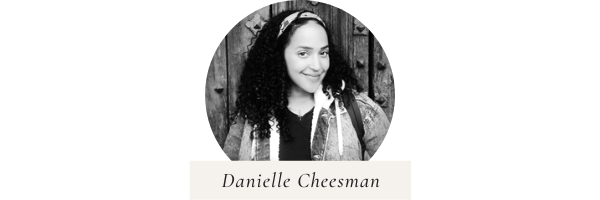
How The French Concept “Mise En Place” Is Helping Me Stay Productive While Working From Home
It’s pronounced MEEZ-ahn-plahs
If you’ve ever watched a cooking show, you’ve likely seen the chefs’ prep stations lined with pinch bowls and platters full of all the ingredients they’ll soon need to make their dishes. This shared organizational style isn’t a coincidence, but instead a practice taught in culinary schools. Called mise en place, the French phrase means “put in place” and refers to the gathering and arrangement of one’s necessities for cooking.
More than a management system, however, in 2014, Melissa Gray, a then-senior at the Culinary Institute of America, told NPR, “It really is a way of life.” She added, “It’s a way of concentrating your mind to only focus on the aspects that you need to be working on at that moment, to kind of rid yourself of distractions.”
“‘Mise en place’ refers to the gathering and arrangement of one’s necessities for cooking.”
The late Anthony Bourdain wrote of mise en place, “As a cook, your station, and its condition, its state of readiness, is an extension of your nervous system…[If you let it] get dirty and disorganized, you’ll quickly find yourself spinning in place.” And Julia Child outlined the shapes of her pots and pans on a pegboard so that she knew right where to hang them back up when she was done using them.
All that to say, if it’s good enough for the greats, it’s good enough for me. And I am unsurprised that I am drawn to this concept. As someone who can feel enclosed by clutter (and, admittedly, get a little shrieky about it—as my partner will attest), I’ve learned that, for me, a clearer space makes a clearer mind. This became no more evident than when I began working from home several months ago due to the spread of COVID-19.
Up until then, my bedroom desk had simply become a display case for a large monitor I’d ordered off eBay two years earlier and rarely used. Now, the desk is not only where I spend hours of my day, but where I actively need to be productive. It took no time at all to realize that the chair was too low, the desk itself was drawerless, and a jar full of permanent markers was not nearly as useful as one full of pens.
“I quickly realized which items deserved space on my desk and which didn’t.”
After getting risers for the chair legs and dragging my small filing cabinet out of the living room closet and into my bedroom, I began to work and quickly realized which items deserved space on my desk and which didn’t. The winners were determined by both what I reached for consistently and what ignited a wince of frustration. (Btw, here is your yearly reminder to toss out your non-working pens.)
I discovered that all I needed was my water bottle to my right, bullet journal to my left, and two pens: one black to write my tasks and one red to notate them. Everything else was superfluous. The vision board I’d crafted on construction paper and never mounted onto anything more substantial—thus allowing it to flop around my desk like those oversized arm-flailing inflatables—would have to be placed elsewhere.
Removing distractions from my desk allows me a sharper focus during my workday. As tasks are assigned and to-dos come to mind, I can easily shift from keyboard to journal without bumping into (or wondering why I never lit) that candle I brought home from Spain nearly two years ago. Without these distractions, I can offer direct attention instead of daydreaming.
“It’s so elegant, this system. It’s not just about organizing space, it’s actually about how you relate to space, to time, to motions within that space.”
In 2016, longtime journalist Dan Charnas released the book, “Work Clean: The Life-Changing Power of Mise-En-Place to Organize Your Life, Work, and Mind.” He told Food & Wine, “It’s so elegant, this system. It’s not just about organizing space, it’s actually about how you relate to space, to time, to motions within that space…Mise en place is not about making things tidy, it’s not about things looking clean. It’s about being able to work clean, which implies motion.” He added that without this kind of planning, it would be impossible for a chef to succeed.
Feeling encouraged by my newly organized workspace, I sought order and peace elsewhere in my home and found that implementing such makes me a more compassionate cohabiter, too. As NPR notes, mise en place enforces that not only your time and space are precious but “the respect of others” as well. Executing the concept across the small bathroom I share with my partner allowed me to spend less time ransacking my basket of personal products and more time considering (and compromising on) our shared space and simultaneous schedules.
“Being stingy with your attention isn’t selfish; it’s essential.”
I see now how the compartmentalization that mise en place inspires can positively inform our mental well-being—not the kind of compartmentalizing that allows us to avoid our emotions to our detriment, but the kind that Forbes earnestly describes as “the secret behind successful entrepreneurs.” Here, compartmentalization is not a defense mechanism, but a mindful practice. Here, it’s a strategy to stay present. And for Forbes’ Ryan Blair, it was achieved in this way: “I learned [that] prioritizing is saying ‘no’ and focusing on only the few things that matter most.” Let that serve as a reminder that being stingy with your attention isn’t selfish; it’s essential.
As our editors have previously noted, the impact of mindfulness is born from routine—and this beloved culinary concept is nothing if not an effort to make one’s routines more rewarding. While we’re not all chefs, we might have morning practices or professional patterns that could benefit from a more intentional self. And establishing order can feel a lot like establishing boundaries when it comes to protecting your schedule, values, and space (both physical and mental).
“Establishing order can feel a lot like establishing boundaries when it comes to protecting your schedule, values, and space.”
None of this is to say that there shouldn’t be spontaneity in your life, but in the areas where it benefits you to concentrate, prioritize, or produce, there is comfort in reliability. And mise en place is indeed an opportunity to trust in and depend upon your own self-preserving choices.
What methods do you use to stay productive, prioritized, and present? Share in the comments below!
RELATED READING
Danielle Cheesman was born and raised in New Jersey, where she lived until moving to Philadelphia to study journalism at Temple University. She has spent her years writing and developing editorial visions for music, art, and lifestyle brands. Now residing in Los Angeles, you can usually find her taking pictures, making playlists, or cuddling her pup. Say hi on Instagram!
